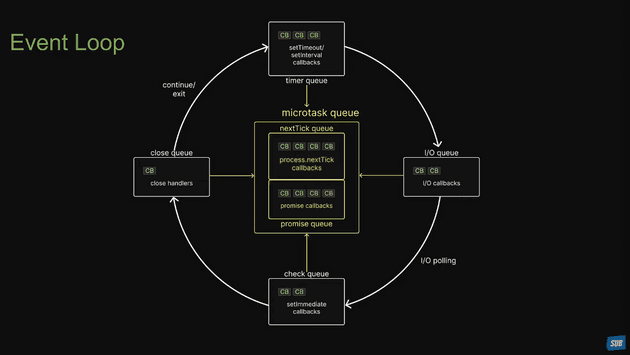Preface
阻塞(blocking),是指在作業系統(operation system,簡稱 OS)中,當系統等待操作完成,接著才允許程式碼繼續執行,用戶在此等待期間無法執行其他任務;相反,非阻塞(non blocking),則是允許執行緒繼續執行,無需等待該操作完成,不會影響其他進程。
Asynchronous programming
在 JavaScript 中,異步是很重要的一個概念,為何說他重要,各位可以試想一下,如果 network request 也就是我們常說的 call API 的這行為是阻塞的,執行完一個才執行下一個,而不是在執行時平行去跟後台要檔案,一隻 API 一秒,十隻 API 就十秒,使用者使用的體感及實際效能是不是會相當的差。
所以我們可以說 JavaSciprt 是一個 Asynchronous Programming Language,但異步的程式語言也就意味著,會有很多 callback (回調函式),如果 API 的邏輯很複雜,就有可能會產生所謂的 callback hell (回調函式地獄),如下方程式碼。
asyncFunction1(param1, function (result1) {
asyncFunction2(result1, function (result2) {
asyncFunction3(result2, function (result3) {
asyncFunction4(result3, function (result4) {
// Nested callback continues...
})
})
})
})程式碼會一層一層的非常的深,那要如何緩解這一現象呢?
Promise or Async/Await
使用 Promise 後我們的程式碼會像
asyncFunction1(param1)
.then(result1 => asyncFunction2(result1))
.then(result2 => asyncFunction3(result2))
.then(result3 => asyncFunction4(result3))
.then(result4 => {
// Handle final result
})
.catch(error => {
// Handle any errors
})而使用 async/await 後我們程式碼會像
try {
const result1 = await asyncFunction1(param1)
const result2 = await asyncFunction2(result1)
const result3 = await asyncFunction3(result2)
const result4 = await asyncFunction4(result3)
// Handle final result
} catch (error) {
// Handle any errors
}基本上 async/await 這語法糖是建立在 Promise 上,讓我們有種寫起來跟讀起來很像同步 (synchronous) 的程式碼,但事實上並非如此,他並不會造成阻塞,其他程式同時仍會照常執行。
但你或許又有疑問,JavaScript 不是一個單線程語言嗎?在這限制底下,這語言一段時間只能執行一段程式碼,JavaScript 有一個很重要的東西叫做 event loop,基本上執行都是依照這個規則來,簡單來講就是讓程式去排隊,圖示會如下:

我個人相當相當建議去看這個 youtube,會對理解這門語言有幫助。
Conclusion
以上是我自己理解的範疇,希望對讀者有幫助,題外話,有興趣可以去看一下 v8 engine,他是 google 寫的 c++ 專案,用來編譯 JavaScript,連結在這。